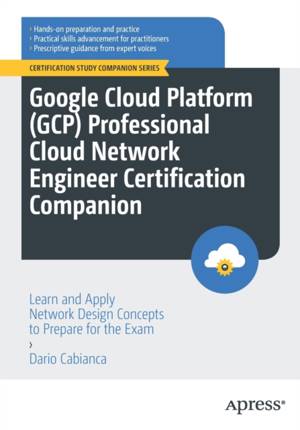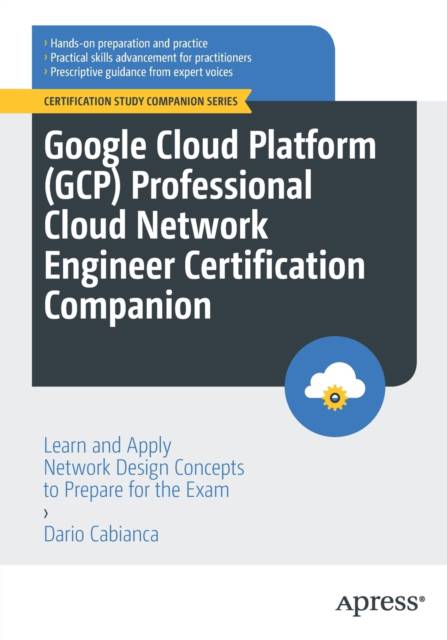
- Retrait gratuit dans votre magasin Club
- 7.000.000 titres dans notre catalogue
- Payer en toute sécurité
- Toujours un magasin près de chez vous
- Retrait gratuit dans votre magasin Club
- 7.000.0000 titres dans notre catalogue
- Payer en toute sécurité
- Toujours un magasin près de chez vous
Google Cloud Platform (Gcp) Professional Cloud Network Engineer Certification Companion
Learn and Apply Network Design Concepts to Prepare for the Exam
Dario CabiancaDescription
While many guides exist to help software engineers learn cloud networking design and architecture concepts, and even prepare for cloud network certifications on AWS and Azure, far fewer resources are available covering the Google Cloud Platform (GCP) Professional Cloud Network Engineer certification exam. Well, look no further! This self-paced guide book is designed to help engineers learn cloud networking best practices on GCP, and prepare for the GCP Professional Cloud Network Engineer certification exam.
You will waste no time when you use this study companion. It lets you dive in and learn how GCP differs from other public cloud providers (AWS and Microsoft Azure). You will understand GCP's unique ability to allow virtual private clouds (VPCs) that span across multiple regions. You will know how to leverage GCP as a competitive advantage in the IT engineering community. Key concepts covered on the exam are called out and applied in each chapter of this book, giving you both practice and reinforcement, a far more effective learning tool than rote learning or similar approaches typically enlisted in exam preparation.
Enterprises are looking for developers with Google networking skills. Now is the time to skill up! This book shows you how to leverage GCP's developer-focused, user-friendly approach to understand how the networking components enabling the popular 1B-user Google products (e.g., Gmail, Google Search, YouTube, Google Workspace (formerly G-Suite), Google Maps, Google Photos, and many others) work behind the scenes.
What You Will Learn
In addition to preparing for the GCP Professional Cloud Network Engineer certification exam, you will learn how to:
- Architect and design a virtual private cloud
- Implement a virtual private cloud
- Configure network services
- Implement hybrid connectivity
- Implement network security
- Manage network operations
- Optimize network resources
Who This Book Is For
Software engineers (network, DevOps, SecOps, DataOps, engineers skilled with SDLC), software architects (solution, security, data, infrastructure, cloud, those skilled with TOGAF), and IT professionals. Prerequisites: While this study companion is intended to be self-contained, a basic knowledge of cloud computing along with hands-on experience with a minimum of two modern programming languages (Java, C#) is beneficial in order for readers to fully achieve the objectives of the book.
Spécifications
Parties prenantes
- Auteur(s) :
- Editeur:
Contenu
- Nombre de pages :
- 429
- Langue:
- Anglais
- Collection :
Caractéristiques
- EAN:
- 9781484293539
- Date de parution :
- 27-06-23
- Format:
- Livre broché
- Format numérique:
- Trade paperback (VS)
- Dimensions :
- 178 mm x 254 mm
- Poids :
- 775 g

Les avis
Nous publions uniquement les avis qui respectent les conditions requises. Consultez nos conditions pour les avis.






